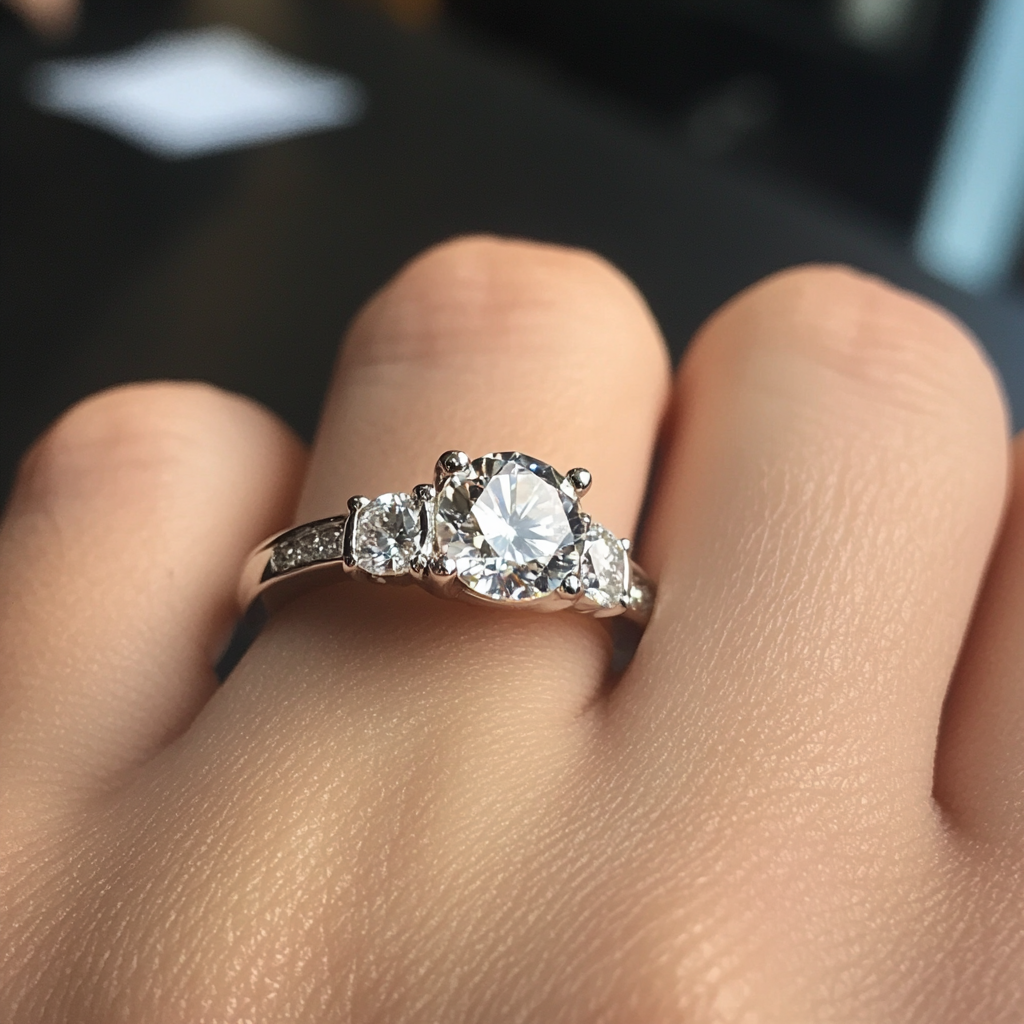Rad_Fan
Ideal_Rock
- Joined
- Sep 1, 2018
- Messages
- 3,173
Look at a synthetic in comparison, see how sharp those back facets look, That hazy appearance, yet still clean, is what you want.
Is glistening a good word for it?
Look at a synthetic in comparison, see how sharp those back facets look, That hazy appearance, yet still clean, is what you want.
No, because that means to sparkle. I think it’s more of a glowy/gleaming effect. It’s hard to describe.Is glistening a good word for it?
A fine emerald should look great in sunlight, right? In "Emeralds: A Passionate Guide": "In addition to the butterfly wing effect, Colombian emeralds are blessed with a natural fluorescence that takes in visible light and sends it back to you as a red message of passion underneath the sober and respectable green color. The red is invisible, but it subconsciously grabs your attention."I think you’ll know if it’s a good emerald once you see it, but if it looks great in sunlight, it will look a even better in incandescent. Check it outdoors as well as inside, and in natural light, but not direct light, like near a window.
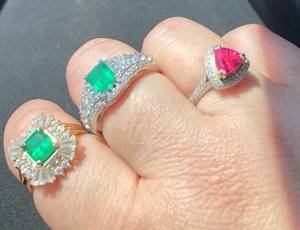
First of all, Columbian emerald does not fluoresce. Synthetics do, so I’m not sure what that commentary about fluorescence isA fine emerald should look great in sunlight, right? In "Emeralds: A Passionate Guide": "In addition to the butterfly wing effect, Colombian emeralds are blessed with a natural fluorescence that takes in visible light and sends it back to you as a red message of passion underneath the sober and respectable green color. The red is invisible, but it subconsciously grabs your attention."
The reason I ask is that in the Please show me your emeralds thread (page 7-, there are posts showing an emerald looking good in north facing window light but go very dark in direct sun. Does this suggest it is not Colombian emeralds? Or is this not uncommon among Colombian emeralds?
I’ll have to look at that quote in the book, but can you reference which stone you’re talking about on that page? I obviously don’t feel right critiquing stones that people own and love unless they ask for an opinion, but maybe I can provide some sensitive commentary. For example, it may not be under direct light, but natural diffused light???The quote regarding the fluoresce of Columbia emeralds is from chapter 12 of the book "Emeralds: A Passionate Guide": http://emeraldpassion.com/sample.htm
Scroll down to the bottom under the subtitle "A perfect storm of unique traits".
Your stones are stunningly bright under direct sun. That is also why I find it strange that that specific emerald shown in the "Please show me your emeralds" thread goes very dark in direct sun. Maybe the description does not match the picture.
I mean does not match.The emerald is at the bottom of page 7 and beginning of page 8. I looked at the picture again and I suspect the description of in direct sun probably does match the picture.
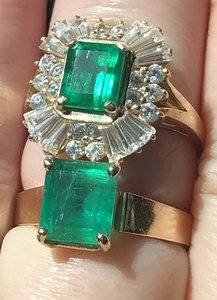
Your emeralds in direct sunlight show that "explosive brightness" (for lack of better words) that look similar to the fluoresce effects of your spinel in sun. I think that is the effect of fluoresce to the visible light.Here is an explanation of what Ringsrud is talking about at the bottom of this thread. They fluoresce in visible light, not UV light. SerenityDiamonds was in the trade at the time and specialized in Columbian emeralds.
https://www.pricescope.com/communit...emeralds-flouresce-red-under-uv-light.148197/
Great information! Unfortunately the regular fluorescent lights in offices are the worst for emeralds as well. A lot of us (me included) spend most of our weekday time in such lightsAn article by Ringsrud on emeralds in various light sources.
http://whitefeathergems.com/content/experts/ron-emeralds.pdf
I thought about that after I read clarification on Ringsrud’s comments about emerald fluorescence. They do “glow” in intense sunlight, so perhaps that is some fluorescence???Your emeralds in direct sunlight show that "explosive brightness" (for lack of better words) that look similar to the fluoresce effects of your spinel in sun. I think that is the effect of fluoresce to the visible light.
A great emerald will look good in fluorescent light.Great information! Unfortunately the regular fluorescent lights in offices are the worst for emeralds as well. A lot of us (me included) spend most of our weekday time in such lights
Do you think the Tiffany emeralds could have been from Zambia, which could perhaps account for the different look?
.
There must be a typo in the dimensions of the 2.2ct chivor. The side by side photos clearly show its face up size to be significantly bigger than the muzo. I'm guessing the x7 should really be x9.7.Oh, I forgot to mention: the 1.73ct muzo is 7.88x7.26x4.57; the 2.2ct chivor is 8.2x7x4.2. I am puzzled why the face sizes do not differ much especially given that the muzo is deeper.
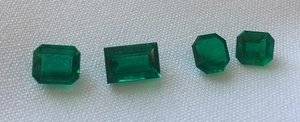

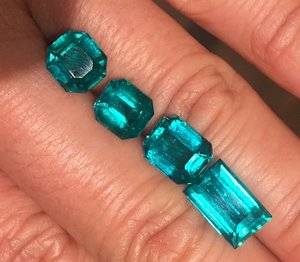
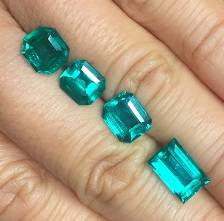
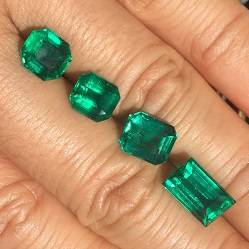
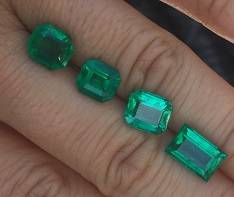
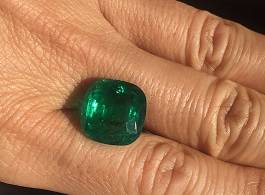
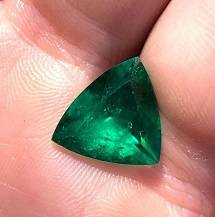
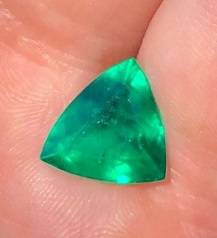
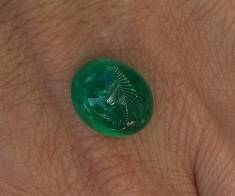
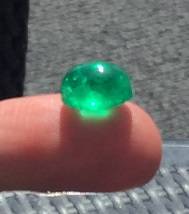
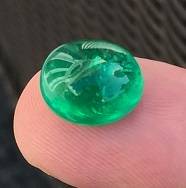
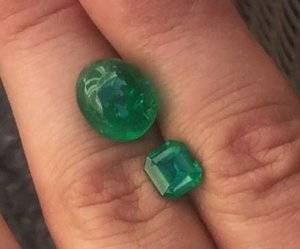
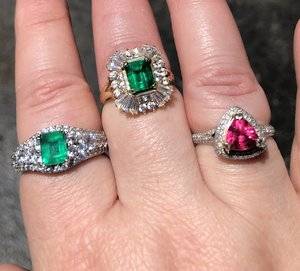
Thank you for the information. All of them show the sheen effects in artificial light. They have a texture feeling, which I suppose is the velvety you mentioned. The 1.52ct muzo and the large chivor (2.8ct) are most obvious in these effects, I think the 2.2ct chivor and 1.78ct muzo have less (at least to me). When examining them in shade out on the balcony, the 1.52ct muzo also clearly shows a soft quality, which I really like.The cabochon price sounds right, That’s around $1300/ct for a huge stone. If it were a faceted stone, the price would be much higher.
BTW, my emeralds don’t always look like that in direct sun, it must have been the time of day. Here’s another shot in direct sun, and even the spinel isn’t as bright neon as the other photo.
I think the Chivor and the cabochon are beautiful and provide a lot of bang for the buck, but Muzo is Muzo. Did they look velvety, especially in artificial light?
